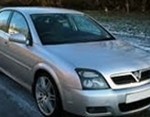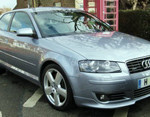Dyno Testing – Myths and Magic!
There is a lot of myth and magic about various type of mapping, usually coming from people on forums with a vague idea, but not the whole idea! We see lots of posts and indeed get a number of questions regarding “live mapping”, “pre/post dyno testing” and generic mapping, so what we will try and do here is separate the myth from the magic.
After reading the following, should you still wish to have your vehicle dyno tested the charge is £80 inclusive of VAT on top of list price, this cannot be used in conjunction with any mapping offers.
Dyno Testing
Engine dynamometers are the most efficient way for development of engine tuning and other modifications as they allow the tester to do continual changes all in one place without the need to go out on the road. The downside of this is it is an artificial test and not a 100% replacement for putting the miles on the clock – you wouldn’t expect a race team to take a car straight off the dyno and enter it into a race, lap upon lap of testing is carried out, in the real world before then!
Why pre/post Dyno runs are not always a good idea
One of the first things that occur when an ECU is reprogrammed is that all the positional and data sensors return to a factory default and post “mapping” these parameters have to be re-learnt. The first one is of course the idle position and this is why your tuner will start the car and let it idle for 5-10 minutes without revving the engine – in the same way as you should do after a flat battery for example.
Now comes the technical bit…
Modern fuel systems are very good, but they will never be 100% perfect due to the tolerances in their manufacture and of course wear and tear on components. Then there are the external factors such as humidity and air temperature to take into consideration as well.
The first influence on the fuel / air mix is determined by the MAF (Mass Air Flow) sensor, which tells the ECU the temperature of the air coming in and how much there is. The ECU will then adjust the fuelling accordingly (taking into consideration the engine temperature as well for example) and run the car richer than if the air temperature is low. When this richer mixture is used, the exhaust gas will contain a richer fuel to air ratio than it would do if the intake air temperature was higher and / or if the engine was warmer.
This fuel to air ratio is then measured by the vehicles Lambda sensor which feeds the data back to the ECU, which in turn trims the fuel accordingly. As you can probably see now, this is a constant battle between the various sensors and the ECU with the resultant factor being a constantly monitored fuel trim – or in actual fact two fuel trims, long term and short term.
So why does this affect post tuning dyno runs?
OK, the first thing to consider is that the engine ECU has a baseline because it has all been reset, so it has to start relearning all the short and long term fuel trims again, but this time, the fuelling will have also been changed due to the remapping. This can take up to 150 miles in some cases and has the effect that some cars will not produce the full power as they will not be at their most efficient until this has got closer to Lambda (roughly 14.7 air; 1 fuel by weight).
The second thing to remember is that a dyno is an artificial test, with at best, a fan to keep the engine cool – but it can never replace the full airflow that a car can receive when on the road, so the MAF reading will never be quite the same and also the actual engine temperature will normally be considerably higher as well. All this isn’t an issue until you remember that while all this is happening your poor Lambda sensor and ECU are desperately trying to adjust the fuel trim to make the engine run at its most efficient and this is why we do not recommend doing a post dyno test on the majority of modern vehicles with standard ECU’s – or in other words, the dyno test will not only be utter rubbish in terms of the accuracy of the test, but it may also have a detrimental affect on the setup of the engine for a while until it brings it all back into spec!
Obviously we could have gone a lot more into the technical details about this, but we have tried to keep it as short and understandable as possible! We can of course do you post dyno testing, its your choice, but do consider the above before spending money on having it done.
Types of mapping
Custom Map
A Custom map is where every static map starts from on a software build. The map is read from the car then adjustments made to it by the technician to try and obtain what the customer wants from the car, using his skill and experience of the both the ECU and the engine type to achieve what the customer is looking for and to take into consideration any modifications that have been made. He will then either road test the car with diagnostic equipment recording the details or run it up on a artificial test, such as a rolling road. He will then review the results and tweak further if required. Some companies do this first run on the dyno and deliberately leave a margin for improvement, which they then apply for a second run which leaves the customer with an immense sense of satisfaction that the person doing it has tweaked it to their car. Truth is, they could have done that to start with – and yes there are a number of companies that do this!!
Of course, no technician is going to start from a blank canvas, either in mind or actual mapping and will over lay what they have done previously time and time again in the main anyway, otherwise he will be there for days.
The downside to a custom map is of course it is un-tried, un-tested and there is little knowledge as to any longer term affects, other than that of the person doing the mapping. In the main though, a custom map will produce roughly the same power as a generic map.
Live Map
This is what most people think Custom Mapping is, but it is very very different. This is mapping done with the car running and driven on the dyno, not stopped and having the map loaded on with the engine off and then been given a dyno run. Live mapping is what companies do mainly for competition cars and specially modified cars with real hardware changes (i.e. not just an induction kit or exhaust) and of course this is much more expensive. We charge from £450 upwards depending on the car and of course you will gain maximum power from it – but don’t forget that in the main this is why you have this type of work carried out at this level, so do not expect any sympathy towards fuel consumption, longevity etc. unless you want that put into the setup – in which case you wouldn’t probably be having it done in this way!
Generic Map
In reality a Generic map doesn’t exist in modern tuning. Most cars now have software that is unique to them as it includes data such as chassis number, so most tuning companies will download the map that is on the vehicle and work from that map wherever possible. What is generic is the knowledge the tuner has of that engine type. Basically, no one will start with a blank mind, so all prior knowledge will be put into the map and then tweaked accordingly. Years ago you could buy “chips” for your ECU – these were indeed generic as they were very basic data on the older ECU’s and you could swap them in and out as required, this is not possible and in fact the vehicle wouldn’t even start now if you did similar with modern mapping data.




